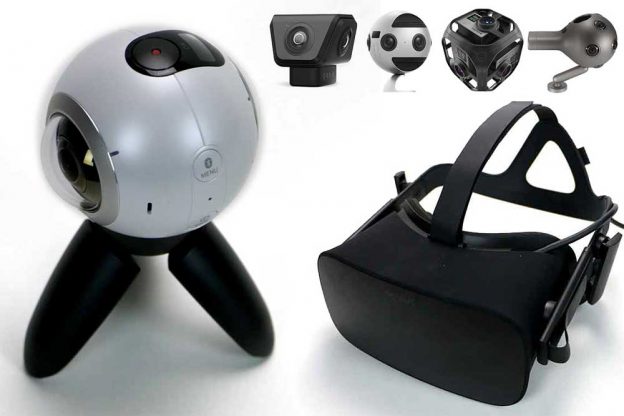Making the jump to 360 Video (Part 1)
By Jim Bask
 VR headsets have been available for over a year now, and more content is constantly being developed for them. We should expect that rate to increase as new headset models are being released from established technology companies, prompted in part by the new VR features expected in Microsoft’s next update to Windows 10. As the potential customer base increases, the software continues to mature, and the content offerings broaden. And with the advances in graphics processing technology, we are finally getting to a point where it is feasible to edit videos in VR, on a laptop.
VR headsets have been available for over a year now, and more content is constantly being developed for them. We should expect that rate to increase as new headset models are being released from established technology companies, prompted in part by the new VR features expected in Microsoft’s next update to Windows 10. As the potential customer base increases, the software continues to mature, and the content offerings broaden. And with the advances in graphics processing technology, we are finally getting to a point where it is feasible to edit videos in VR, on a laptop.
While a full VR experience requires true 3D content, in order to render a custom perspective based on the position of the viewer’s head, there is a “video” version of VR, which is called 360 Video. The difference between “Full VR” and “360 Video,” is that while both allow you to look around every direction, 360 Video is pre-recorded from a particular point, and you are limited to the view from that spot. You can’t move your head to see around behind something, like you can in true VR. But 360 video can still offer a very immersive experience and arguably better visuals, since they aren’t being rendered on the fly. 360 video can be recorded in stereoscopic or flat, depending on the capabilities of the cameras used.
Stereoscopic is obviously more immersive, less of a video dome and inherently supported by the nature of VR HMDs (Head Mounted Displays). I expect that stereoscopic content will be much more popular in 360 Video than it ever was for flat screen content. Basically the viewer is already wearing the 3D glasses, so there is no downside, besides needing twice as much source imagery to work with, similar to flat screen stereoscopic.
There are a variety of options for recording 360 video, from a single ultra-wide fisheye lens on the Fly360, to dual 180-degree lens options like the Gear 360, Nikon KeyMission, and Garmin Virb. GoPro is releasing the Fusion, which will fall into this category as well. The next step is more lens, with cameras like the Orah4i or the Insta360 Pro. Beyond that, you are stepping into the much more expensive rigs with lots of lenses and lots of stitching, but usually much higher final image quality, like the GoPro Omni or the Nokia Ozo. There are also countless rigs that use an array of standard cameras to capture 360 degrees, but these solutions are much less integrated than the all-in-one products that are now entering the market. Regardless of the camera you use, you are going to be recording one or more files in a pixel format fairly unique to that camera that will need to be processed before it can be used in the later stages of the post workflow…[continue reading]

